Why juniper needles are turning yellow
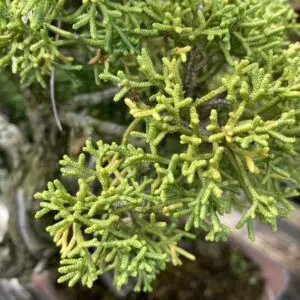
Yellowing juniper needles
One of the most common problems that juniper bonsai growers encounter is yellowing needles. There are several possible reasons why the needles on your juniper bonsai may be turning yellow.
Yellowing needles on a juniper bonsai can be caused by mistreatments related to watering, fertilization, repotting stress, as well as pests and diseases, and environmental factors such as sunlight and temperature.
Another obvious but totally nonproblematic reason for yellowing juniper needles is seasonal turning color before natural shedding.
Understanding these potential causes can help you identify the problem and take the necessary steps to save your tree (which is discussed in the next section).
Over- or under-watering
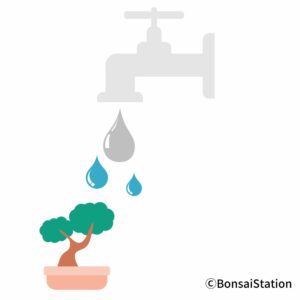
Watering is one of the most common reasons for yellowing juniper bonsai. The difficult part is that both overwatering and underwatering can lead to yellowing needles. So, it is critical to find the right balance.
Overwatering
Overwatering is a common cause of yellowing needles in juniper bonsai trees.
If the roots are waterlogged for a long time, it can harm the root hairs that help the tree absorb water, nutrients, and oxygen. These root hairs are very important for the tree to function properly. If they are damaged, the tree will not be able to get enough oxygen, which is necessary for photosynthesis.
Also, while juniper bonsai need lots of water to maintain growth and beautiful foliage mass, they prefer to be kept in well-drained, drier soil and do not like to be kept in wet soil. This is partly because they grow in barren, rocky land in nature.
So, the stress from excess water can cause the needles to turn yellow and eventually die far quicker than they normally would.
Underwatering
Underwatering can also cause yellowing needles in juniper bonsai trees.
Just like excess water, lack of water also damages the root hairs which help the tree absorb water, nutrients, and oxygen. Without enough water, the tree may become dehydrated and stressed, leading to yellowing needles.
Underwatering can be caused simply by mistreatment but also by dense foliage that repels water from reaching the soil or moss that makes the soil look moist, which is actually dry underneath.
Over- or under-fertilization

Overfertilization
Overfertilization can cause needles on juniper bonsai to turn yellow.
Overfertilization occurs when too much fertilizer is applied, causing a concentration of soluble salts in the soil. These salts damage roots by slowing the flow of water into the roots, leading to yellowing needles as well as slow growth, and stunted development.
Using too much fertilizers is an obvious reason for over-fertilization but it can be caused by nutrients not being drained enough because of the compacted soil or lack of watering.
Under-fertilization
Juniper bonsai trees require nutrients to maintain their health and nutrient deficiency can cause yellowing needles.
One of the distinctive causes of juniper bonsai trees’ under-fertilization, which is not commonly seen in other houseplants, is frequent watering. Even if you apply an appropriate amount of fertilizer, any nutrients that are not immediately absorbed by the tree can be washed away with irrigation, especially when you only use liquid fertilizer.
Sunlight and temperature

Juniper bonsai trees need plenty of bright, direct sunlight to thrive: full sun all day in all seasons. They can tolerate quite strong sunlight but without enough light, the needles start to turn yellow.
Extreme heat or cold can stress or damage the tree as well, leading to yellowing needles.
Pests and Diseases
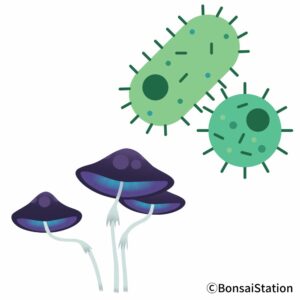
Pests and diseases can cause yellowing needles on your juniper bonsai tree.
There are several pests and diseases that can cause yellowing needles on your juniper bonsai tree. Spider/Eriophyd mites, scale insects, and web/bagworms can all feed on the needles and cause yellowing and discoloration. Fungal diseases, such as needle blight and root rot diseases, can also cause yellowing needles.
Repotting stress
Repotting stress can cause your juniper bonsai to turn yellow.
These can include repotting in the wrong season, radical root pruning, wrong choice of new soil, or improper aftercare, resulting in the needles turning yellow (and eventually dying of the entire tree in some cases).
Natural shedding

Yellowing juniper needles (natural shedding)
While junipers are called “evergreen”, their needles are not forever green. Depending on the species, juniper needles turn yellow and then brown after a couple or more years. It may seem to be alarming at first but seasonal needle loss is a natural part of the life cycle of the tree.
As with deciduous trees, junipers shed needles in fall and needles on the inner side will fall.
How to save your yellowing juniper bonsai
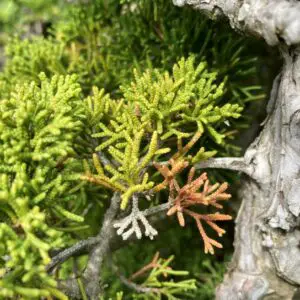
Yellowing/browning juniper needles
Watering
Proper watering is essential for a healthy bonsai tree. You should water your juniper bonsai when the soil is half dry. You shouldn’t keep the soil always wet or let it completely dry. When you water, give in abundance.
Though they are drought tolerant, juniper bonsai loves water. The general rule for watering a juniper bonsai is;
-
- 1-2 times a day in spring and fall,
- 2-3 times a day in summer, and,
- Once every 2 to 3 days in winter.
Depending on where you live, the age of your tree and when it last repotted, you should adjust the frequency of watering.
For more about watering juniper bonsai, the following post might be helpful.
Over- or under-fertilization
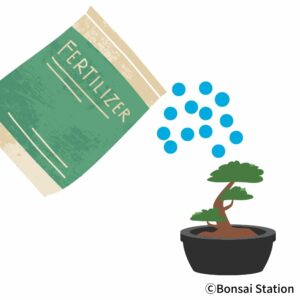
Fertilizer provides your tree with the necessary nutrients it needs to grow and thrive but giving it too much or too little can cause the needles to turn yellow and fall off.
I would say it is always better to under-fertilize than over-fertilize because low nutrients would rarely kill the tree while too much nutrients can kill it fairly quickly.
Use a balanced (with a little emphasis on Nitrogen), slow-release, solid fertilizer. You should follow the instruction label for dosage and application but always start slow, watch how your tree is doing and then increase the dosage and application if necessary.
If you are interested in juniper bonsai fertilization, please read the following post.
Lack of sunlight

Juniper bonsai trees require bright, direct sunlight to thrive. So you should place your juniper bonsai outside, in an area where it can have direct sunlight all day long. It is a good idea to rotate your tree from time to time to ensure that your tree gets light exposure evenly.
Pests and Diseases
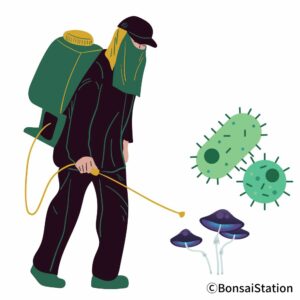
It is important to take quick action to identify and address issues with pests and diseases to save your tree from further damage. Familiarize yourself with the common pests and diseases that affect bonsai trees in your area. This will help you identify any pests you may encounter.
It is sometimes difficult to identify what causes your tree to turn yellow but pests and diseases often cause the yellowing of the outer, newest needles, death of entire branches in a relatively short period of time, or thinning of needles on just a part of branches.
Once you’ve identified the problem, you can take action to control pests and diseases. There are chemical (insecticide, fungicide or neem oil) and non-chemical options (remove by hand, wash, or prune the affected area) to choose from.
To identify and treat pests and diseases, the following post might be helpful.
Repotting stress
Repotting is a stressful experience for your bonsai tree and it is not uncommon for the tree to exhibit signs of stress or shock after the procedure. If your tree isn’t doing well after a few weeks of repotting, it may be because of repotting shock.
You can either check for root damage and repot again or prune back damaged leaves and branches.
For a detailed guide to recovery from repotting stress, the following post might be helpful.



